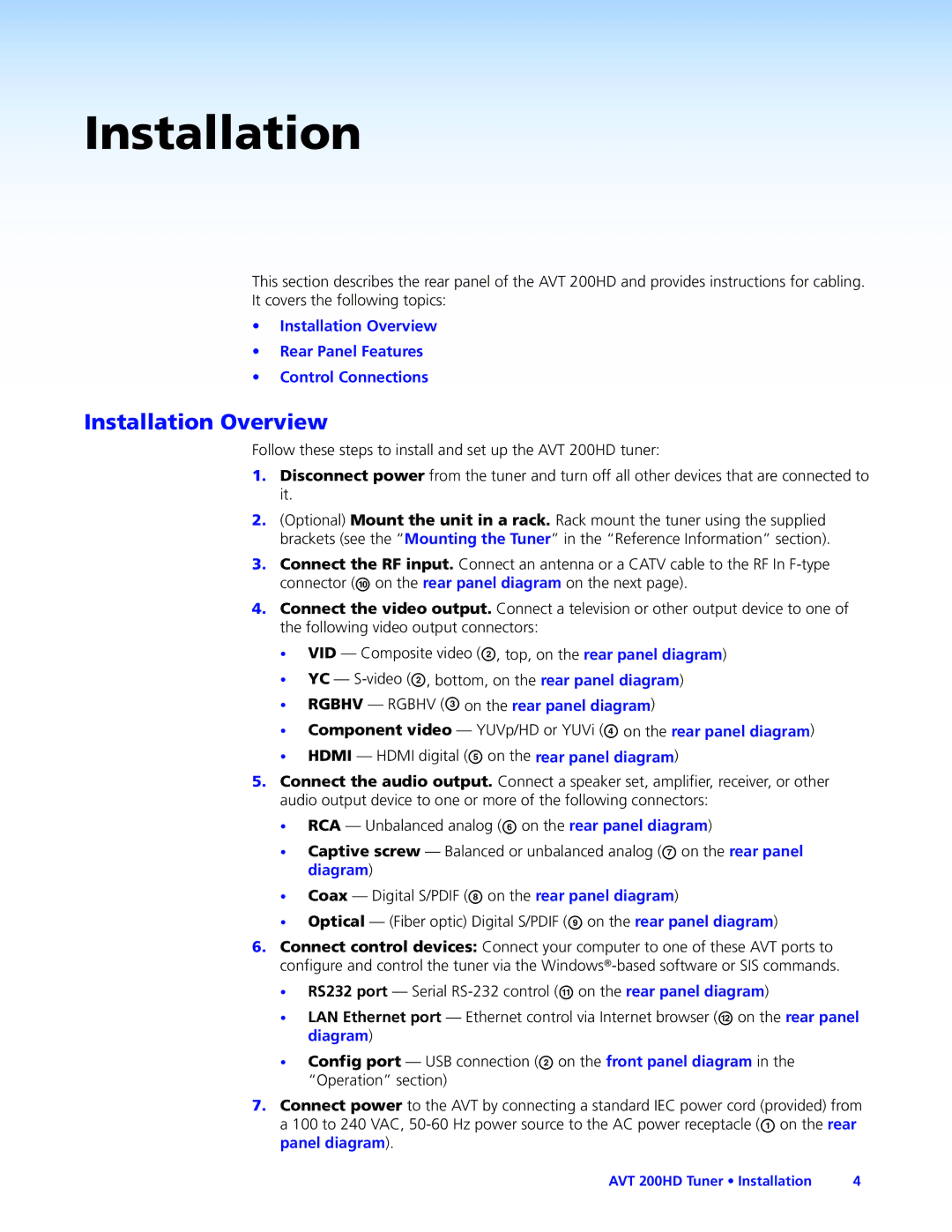
Installation
This section describes the rear panel of the AVT 200HD and provides instructions for cabling. It covers the following topics:
•Installation Overview
•Rear Panel Features
•Control Connections
Installation Overview
Follow these steps to install and set up the AVT 200HD tuner:
1.Disconnect power from the tuner and turn off all other devices that are connected to it.
2.(Optional) Mount the unit in a rack. Rack mount the tuner using the supplied brackets (see the “Mounting the Tuner” in the “Reference Information” section).
3.Connect the RF input. Connect an antenna or a CATV cable to the RF In
4.Connect the video output. Connect a television or other output device to one of the following video output connectors:
•VID — Composite video (B, top, on the rear panel diagram)
•YC —
•RGBHV — RGBHV (C on the rear panel diagram)
•Component video — YUVp/HD or YUVi (D on the rear panel diagram)
•HDMI — HDMI digital (E on the rear panel diagram)
5.Connect the audio output. Connect a speaker set, amplifier, receiver, or other audio output device to one or more of the following connectors:
•RCA — Unbalanced analog (F on the rear panel diagram)
•Captive screw — Balanced or unbalanced analog (G on the rear panel diagram)
•Coax — Digital S/PDIF (H on the rear panel diagram)
•Optical — (Fiber optic) Digital S/PDIF (I on the rear panel diagram)
6.Connect control devices: Connect your computer to one of these AVT ports to configure and control the tuner via the
•RS232 port — Serial
•LAN Ethernet port — Ethernet control via Internet browser (L on the rear panel diagram)
•Config port — USB connection (B on the front panel diagram in the “Operation” section)
7.Connect power to the AVT by connecting a standard IEC power cord (provided) from
a 100 to 240 VAC,
AVT 200HD Tuner • Installation | 4 |
